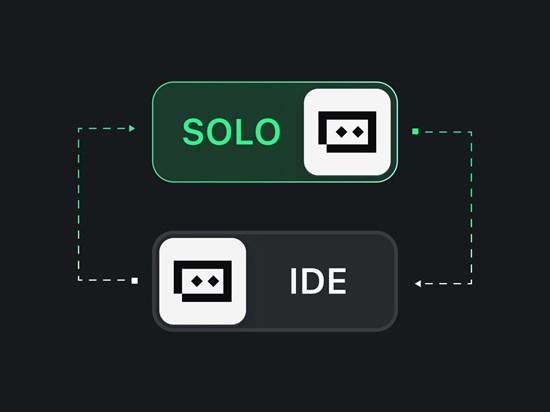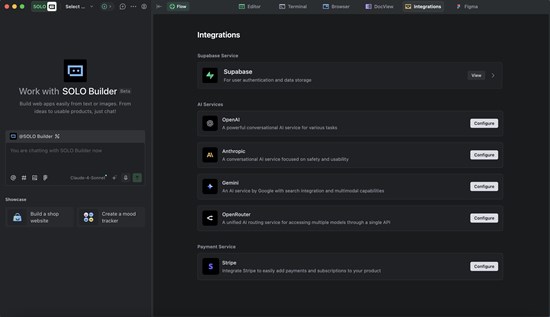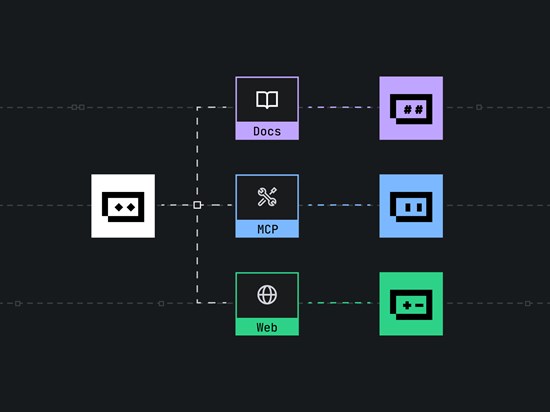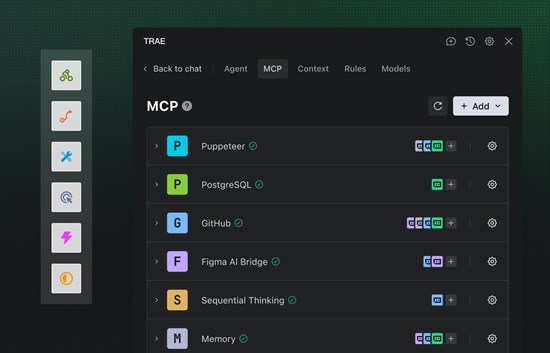TRAE Unleashes the Next Era of AI Coding
Singapore, Singapore–(Newsfile Corp. – September 23, 2025) – TRAE officially launches as a next-generation AI-powered coding platform, unleashing the next era of AI coding with a unified environment that accelerates development and transforms how software is conceived, designed, and delivered-for both professional developers and low-code creators.
TRAE LOGO
To view an enhanced version of this graphic, please visit:
https://images.newsfilecorp.com/files/8457/267532_aeea8d38049d9acd_001full.jpg
Software development has traditionally been a fragmented and time-consuming process, requiring multiple stakeholders to work across disconnected workflows. Product managers draft lengthy specifications, designers map out flows and wireframes, and engineers implement logic across different programming languages, frameworks, and tools. This siloed approach often slows down innovation and creates inefficiencies that limit how quickly ideas can become reality.
TRAE changes this dynamic by offering a unified environment that integrates two complementary modes: IDE Mode, which provides intelligent assistance for developer-controlled workflows, and SOLO Mode, which represents a breakthrough in end-to-end automation. Together, these two modes create a fluid ecosystem where coding, documentation, and design are no longer separate silos but part of a single, coherent process.
IDE mode and Solo mode
To view an enhanced version of this graphic, please visit:
https://images.newsfilecorp.com/files/8457/267532_aeea8d38049d9acd_002full.jpg
SOLO Mode: The Core Innovation
At the heart of TRAE lies SOLO Mode, a groundbreaking capability that enables anyone – from a seasoned engineer to a product manager – to transform natural language into complete software systems. SOLO Mode is not about generating a few snippets of code; it is about producing fully functional products that are backed by documentation, structured architecture, and real-world functionality.
SOLO Mode display image
To view an enhanced version of this graphic, please visit:
https://images.newsfilecorp.com/files/8457/267532_aeea8d38049d9acd_003full.jpg
With a simple natural language prompt, SOLO Mode can:
- Generate product documentation: requirement specifications, technical notes, and user stories are automatically written, ensuring clarity before a single line of code is executed.
- Visualize workflows with flowcharts and architecture diagrams: enabling both developers and non-technical stakeholders to understand system logic and design.
- Produce front-end and back-end code: generating everything from user interfaces to server-side logic, aligned directly with the documentation and workflows.
- Configure and extend code directly: developers can customize, while SOLO Mode maintains architectural consistency.
- Integrate tools and services seamlessly: SOLO Mode connects databases, APIs, Figma, and more – ensuring products are not just functional but deployment-ready.
This end-to-end pipeline means that what begins as a simple idea can rapidly evolve into a fully functional, configurable software product – ready for testing, iteration, and deployment. SOLO Mode requires a Pro subscription and activation with a SOLO Code, which can be reserved by joining the waitlist on the official website.
Beyond the Limits of Current Low-Code Tools
Most mainstream low-code platforms today allow users to describe interfaces in natural language and quickly generate front-end pages. While these tools have lowered barriers for non-technical users, they remain limited in scope:
- They rarely create supporting documentation or specifications.
- They lack integration with back-end services and system architecture.
- They cannot embed external tools, APIs, or advanced pipelines directly into the code.
TRAE goes further. By uniting documentation, design, and engineering within a single platform, it bridges the gap between low-code accessibility and professional-grade software development. Instead of producing mockups or isolated code fragments, TRAE delivers complete, deployable applications that reflect both technical rigor and user-centered design.
This leap forward represents a paradigm shift in AI coding: TRAE moves beyond “AI-assisted coding” toward AI-driven software creation, establishing a new benchmark for what generative technology can achieve in the development lifecycle.
Dual Impact: Developers and Low-Code Creators
Feature Overview Diagram 1
To view an enhanced version of this graphic, please visit:
https://images.newsfilecorp.com/files/8457/267532_aeea8d38049d9acd_004full.jpg
One of TRAE’s most powerful contributions is its ability to empower two distinct audiences:
- For developers, TRAE acts as a productivity accelerator. By eliminating boilerplate tasks, streamlining prototyping, and automating integration, developers can focus on solving complex problems rather than repeating manual workflows. IDE Mode further enhances this by offering intelligent code suggestions, context-aware refactoring, and debugging tools – all while preserving developer control. With built-in MCP tool integration, developers can seamlessly connect databases and APIs, while customizable agents act as on-demand coding experts, adapting to project needs and extending team capabilities.
- For low-code users – product managers, designers, and entrepreneurs – TRAE lowers the barrier to creation. SOLO Mode allows them to express ideas in natural language and receive not only user interfaces but also complete documentation, system logic, and back-end functionality. This means they can validate concepts, share prototypes, and collaborate with engineering teams on an entirely new level of precision and speed.
By bridging these two worlds, TRAE doesn’t just improve existing workflows – it creates a new collaborative model where developers and non-technical stakeholders work on the same platform with the same outputs, reducing miscommunication and accelerating product delivery.
Use Cases and Applications
The versatility of TRAE opens doors across industries and organizations:
- Developers can eliminate repetitive coding tasks, accelerate prototyping, and focus on solving higher-value problems with TRAE’s automation.
- Product managers can instantly convert PRDs into live, interactive prototypes that are ready to test with users.
- Designers can validate flows and interfaces with working user logic, moving beyond static wireframes. With Figma built directly into TRAE SOLO Mode – and the option to connect Figma through MCP integration.
The result is a faster, more collaborative, and more innovative development environment that fundamentally reshapes how software is conceived and built.
Impact on the AI Coding Landscape
Feature Overview Diagram 2
To view an enhanced version of this graphic, please visit:
https://images.newsfilecorp.com/files/8457/267532_aeea8d38049d9acd_005full.jpg
The launch of TRAE signals a significant milestone in the evolution of AI coding tools. Until now, most solutions in this space have focused on incremental improvements: smarter code suggestions, better autocomplete, or natural language-driven interface generation. While valuable, these features did not address the full complexity of real-world software development.
TRAE introduces a new paradigm: software creation that starts with natural language and flows seamlessly into documentation, architecture, code, and deployment – all in one environment. This redefines the role of AI in coding: from assistant to co-creator, from helping with code fragments to delivering full-stack, deployable systems.
For the industry, it represents the next step toward making software building as natural as idea expression.
Availability
TRAE is now available at https://www.trae.ai. Anyone interested in AI-powered coding – from developers and product managers to designers, creators, and those exploring vibe coding – can sign up today to experience how TRAE redefines the future of software creation.
Company: TRAE
Contact: TRAE Team
Email: feedback@mail.trae.ai
Website: www.trae.ai
Source: TRAE
Dateline city: Singapore
To view the source version of this press release, please visit https://www.newsfilecorp.com/release/267532





